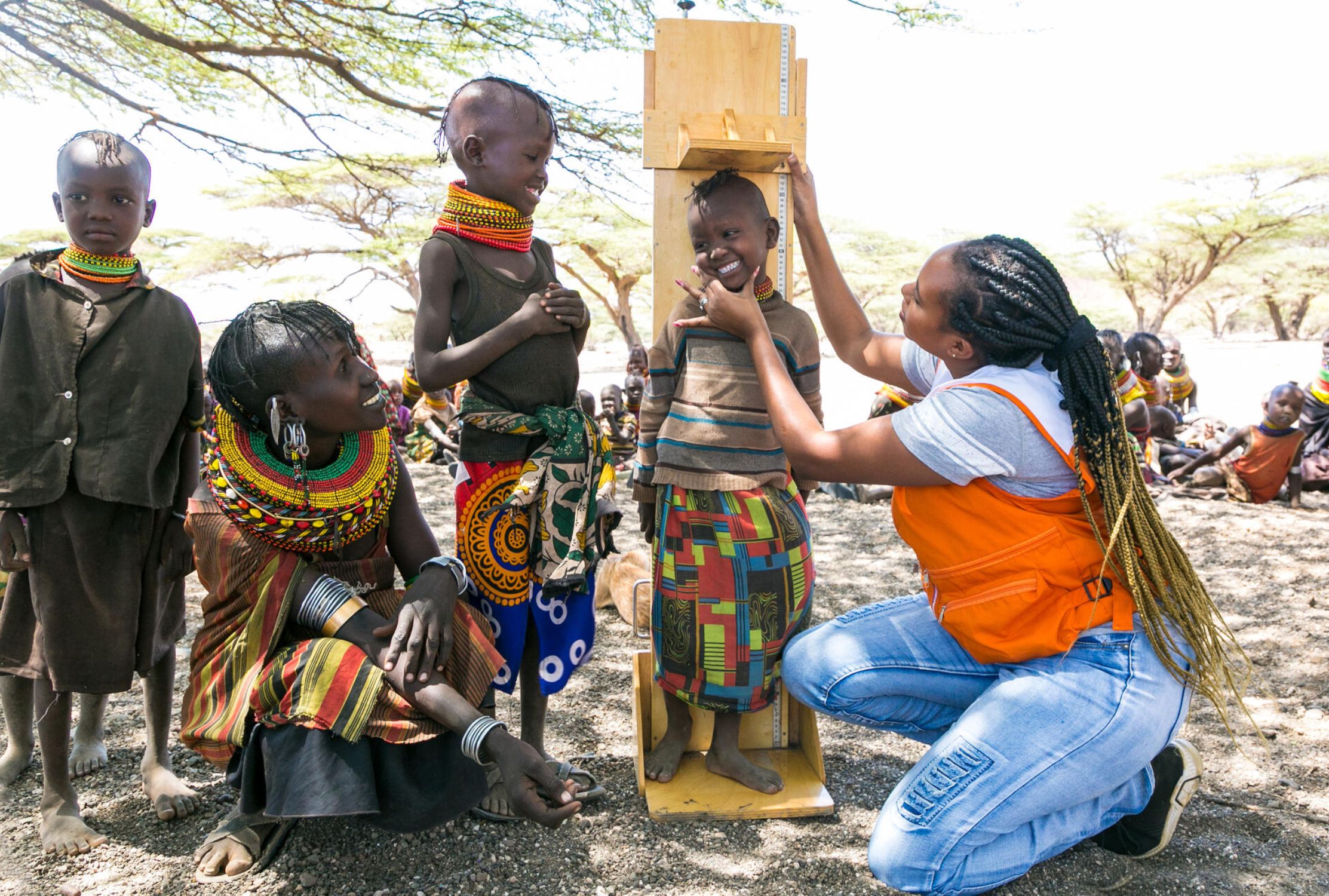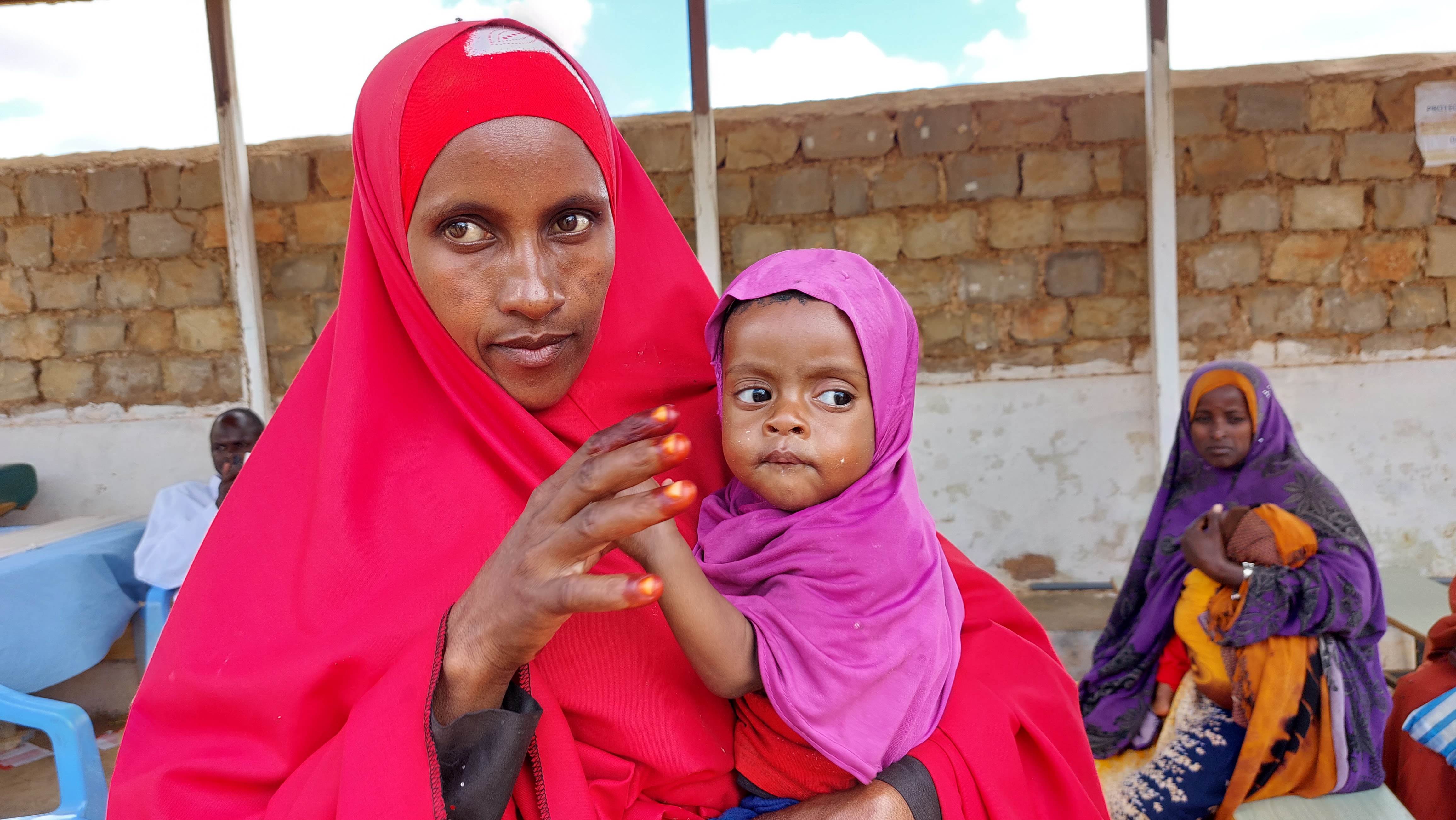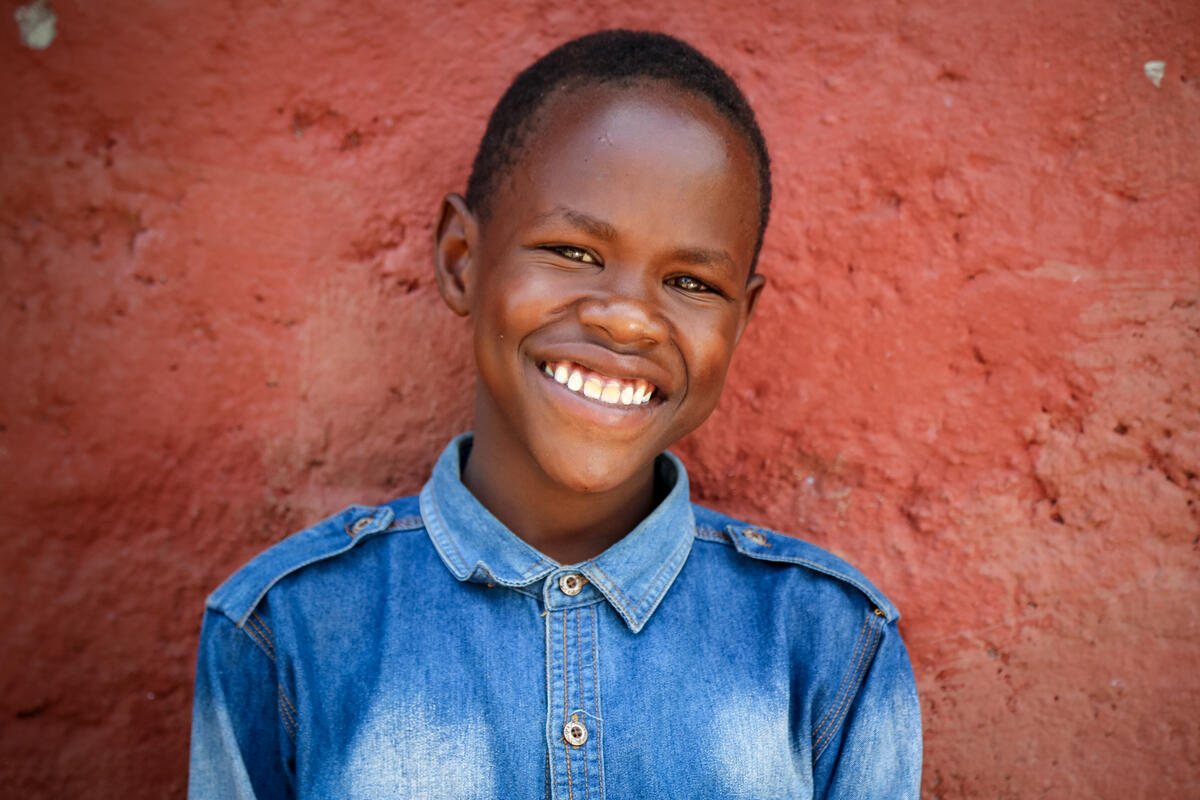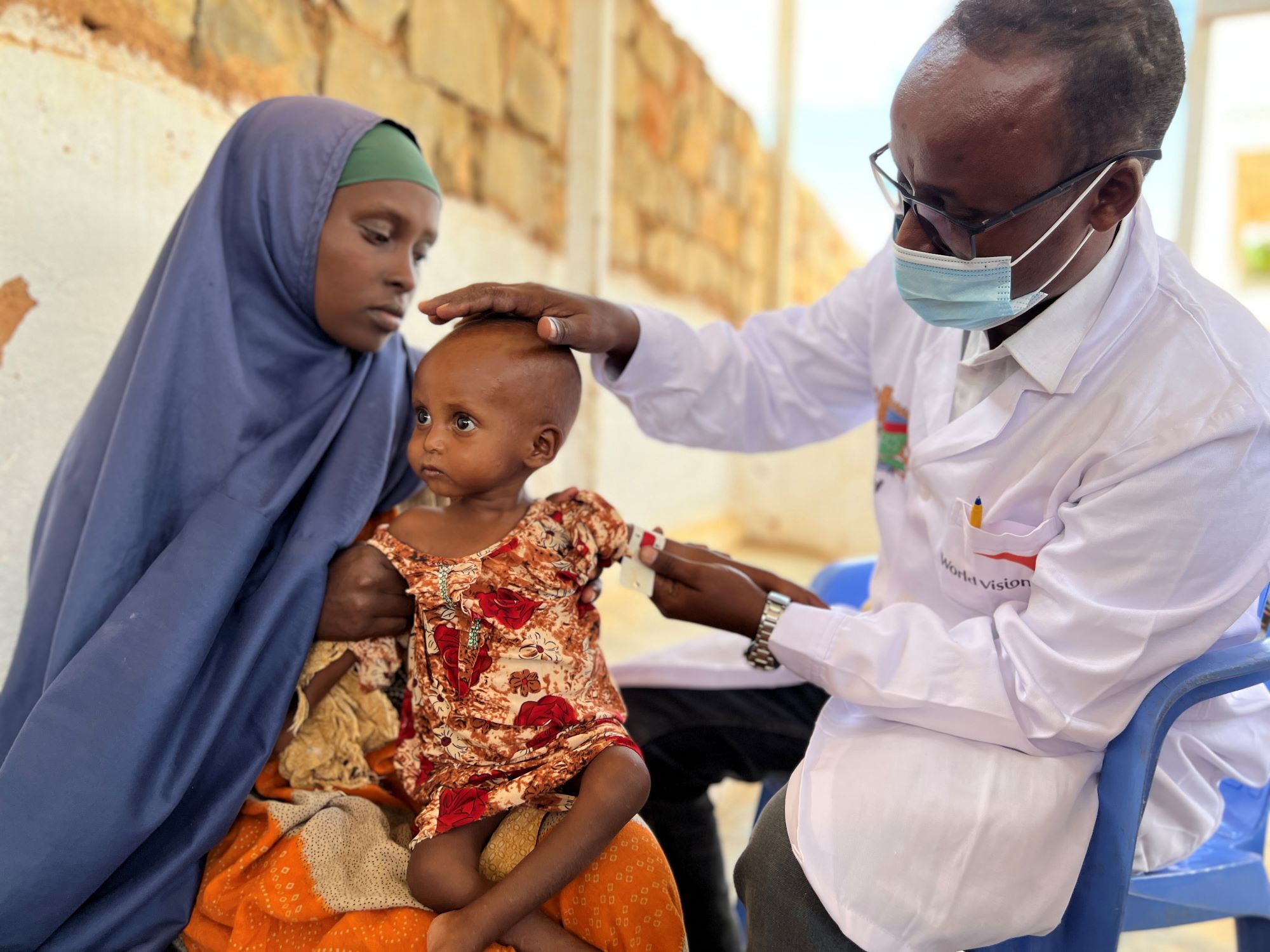
What is famine and who is affected by it?
How does famine affect our world and how can we help?
What is the definition of famine?
Famine is defined by The Integrated Food Security Phase Classification (IPC) as: “the absolute inaccessibility of food to an entire population or sub-group of a population, potentially causing death in the short term.”
Famine is a humanitarian catastrophe that occurs when the following conditions are met:
- At least 20% of households in a given area face ‘food consumption gaps'. There may be enough food available but people either can't afford it or can't access it due to security risks.
- More than 30% of children under the age of five suffer from acute malnutrition.
- Hunger causes more than two deaths per 10,000 people, or four deaths per 10,000 children per day.
Famine is Phase 5 and the final phase of the IPC classification of food security. It’s estimated that in 2023, 205 million people are expected to face acute food insecurities or be in Phase 3 or above in 45 countries.
Famine-like conditions have been experienced across all continents of the world throughout recorded history. However, inequality is a significant factor, as those living in poverty or with low income are often less prepared to cope with food shortages than those who are living in financial security.
READ MORE: Why do children go hungry?

Definitions of key terms
Before we go any further, let’s define some key terms that will be used within this article.
Hunger
Hunger is an uncomfortable or painful physical sensation caused by insufficient consumption of food. If hunger continues, it leads to a child or adult becoming undernourished, meaning they lack the dietary energy required to maintain a normal, active and healthy life.
Food security
A child or adult is food secure when they do not live with any hunger.
Food insecurity
Food insecurity is when a person is lacking regular access to enough safe and nutritious food required for a healthy life and normal development.
Undernutrition
Undernutrition manifests in four broad forms: wasting, stunting, underweight and micronutrient deficiencies.
- Underweight: Children with low weight-for-age are known as underweight. A child who is underweight may be stunted, wasted, or both.
- Wasting: Low weight-for-height is known as wasting, and usually indicates recent and severe weight loss, because a person has not had enough food to eat and/or they have had an infectious disease, such as diarrhoea, which has caused them to lose weight. A young child who is moderately or severely wasted has an increased risk of death, but treatment is possible.
- Stunting: Low height-for-age is known as stunting. It is the result of chronic or recurrent undernutrition, usually associated with poor socioeconomic conditions, poor maternal health and nutrition, frequent illness, and/or inappropriate infant and young child feeding and care in early life. Stunting holds children back from reaching their physical and cognitive potential.
- Micronutrient deficiencies: ‘Micronutrient deficiencies’ describes a lack of vitamins and minerals that are essential for body functions such as producing enzymes, hormones and other substances needed for growth and development.
Malnutrition
Malnutrition refers to deficiencies or excesses in nutrient intake, imbalance of essential nutrients or impaired nutrient utilisation.
Starvation
Starvation is the most extreme form of malnutrition, leading to organ damage and, if not treated, eventually death.
Poverty
Poverty refers to severe deprivation of basic human needs, including food, safe drinking water, sanitation facilities, health, shelter, education and information. This may be due to insufficient access to income or services or lack of participation in decision making.
Poverty amplifies the risk of, and risks from, malnutrition. People who are poor are more likely to be affected by different forms of malnutrition. Malnutrition increases healthcare costs, reduces productivity, and slows economic growth, which can perpetuate a cycle of poverty and ill-health.
Learn more about our mission-focused work to end the cycle of poverty, tackling it at its roots so every child can live life to the full.

What causes famine?
Children and families living in extreme poverty are facing a triple threat. Covid, conflict, and climate change are creating desperate situations, interacting with the increased cost of living, to create new - and worsen existing - hunger hotspots, reversing the gains families had made to escape poverty. Without help, they will be overwhelmed by the worsening hunger crisis.
Conflict
Conflict can be a dominant factor driving hunger. Countries experiencing ongoing conflict can see children and families displaced from their homes, causing them to lose their source of income and disrupting the ability of families and communities to grow food, thereby increasing their risk of hunger.
Cost of living
With the cost of living continuing to rise, households and families across the globe are finding it increasingly more difficult to live, feed their children and support their families. Currency depreciation and inflation of prices of basic foods such as maize and wheat in poorer countries add to national pressure for food security.
Combined with climate change and conflict, the cost of living means that some families are going days without eating or drinking clean water.
Climate change
Reduced rainfall, increased flooding, cyclones, locust swarms and other weather events all have a negative impact on food production. Natural disasters are devastating for millions of families around the world whose primary food source is the food they grow themselves. These weather events directly impact their ability to grow and access food and contribute to increased hunger and famine risk.
READ MORE: Pray for flood victims

Who is affected by famine?
This is a children’s crisis. 50 million people are one step away from famine and face starvation. Urgent life-saving action is needed now to address a humanitarian hunger crisis in which hundreds of thousands of children could die. Famine has no place in the 21st century and is entirely preventable.
We know from past emergencies, such as the 2011 Somalia Famine in which some 258,000 people are estimated to have died, that around half perished before a famine declaration was made. Half of all those that died were children under five years of age.
Families and children
Families and children needing to survive will do whatever it takes. That might mean children dropping out of school to beg or do dangerous work, including becoming child soldiers, which exposes them to trauma, brutality and extreme ideologies and violence.
Families are also forced to flee starvation zones to find food - journeys that some don’t survive, or end in displacement camps, where families become refugees.
READ MORE: What is a refugee and what is a refugee crisis?
Women and girls
Like most other emergencies, women and girls are hit the hardest when it comes to famine. Malnutrition in pregnancy can increase the risk of stillbirths and lead to babies being born at a low birth weight which, tragically, increases the baby’s risk of death. Because of women’s traditional role within a family as the primary caregiver, there is already a tremendous strain on those living in food insecurity, meaning mothers usually eat the least and the last.
Putting a daughter into an early marriage means one less mouth to feed, but may mean the girl is exposed to rape, sexual violence, harmful pregnancy, trauma and a loss of education.

What countries are experiencing famine-like conditions right now?
In Ethiopia, Kenya, Somalia, Niger and Afghanistan the most vulnerable are now just one-step away from famine.
What is World Vision doing to prevent famine?
World Vision is in hunger hotspots around the globe, providing life-saving assistance, tackling malnutrition, providing clean water and protecting children from harm.
Our response:
- Supporting families to recover with food, cash and voucher assistance.
- Treating children with severe or acute malnutrition.
- Protecting children, women and vulnerable groups including psychosocial support.
- Improving access to clean water, sanitation and hygiene.
- Providing food assistance and school meals to children in partnership with the World Food Programme.
The World Vision Partnership’s Global Hunger Response, has reached over 16 million people, of which nine million were children, as of November 2022.
- We have improved access to food for affected households, with over four million people receiving cash and voucher assistance and over 600,000 children receiving food through school feeding programmes.
- We have increased access to quality emergency health and nutrition services, treating over 380,000 children for moderate and severe malnutrition and reaching over one million people through primary healthcare support.
- We have improved access to water and sanitation helping to mitigate waterborne diseases, with over 1.7 million people having access to clean and potable water.
Over the last five years, 89% of the severely malnourished children we treated made a full recovery.
Help World Vision support those experiencing hunger and famine-like conditions today.
Help children survive, recover, and build a future. By supporting World Vision, communities are empowered to create a better future for all. There are a range of ways to support our work, from donating to fight hunger to sponsoring a child.



